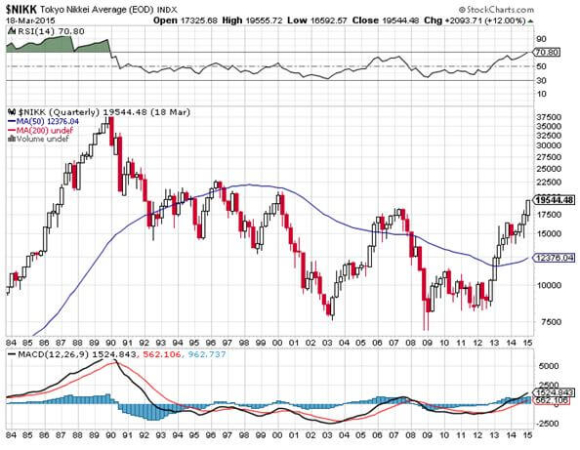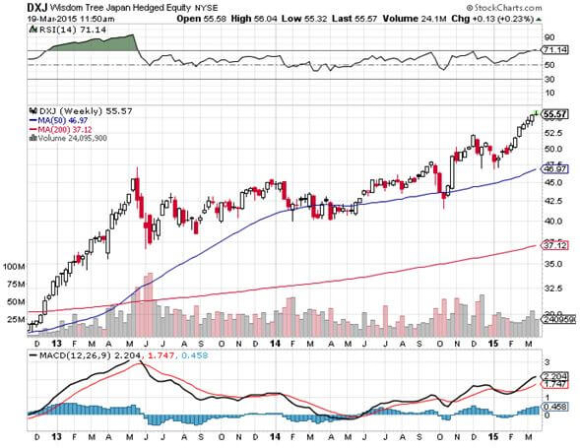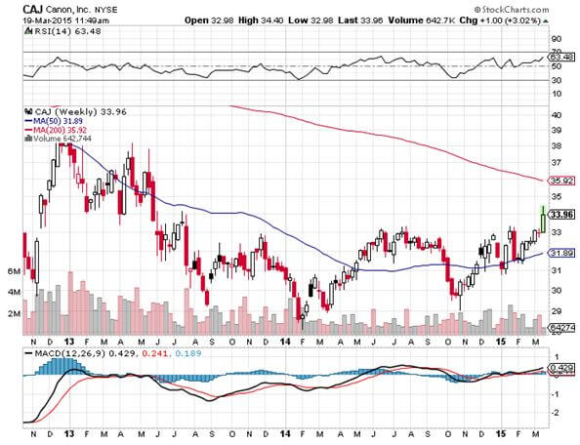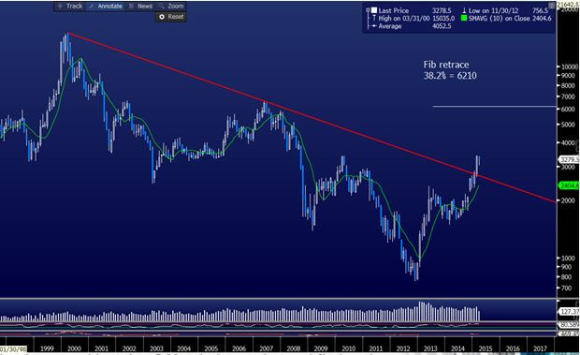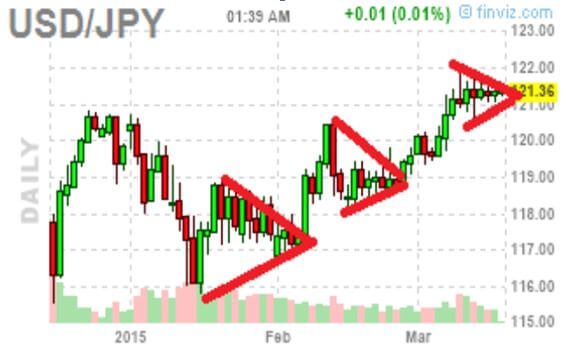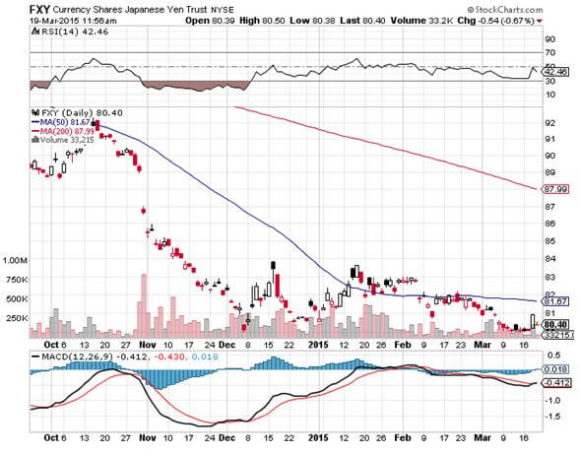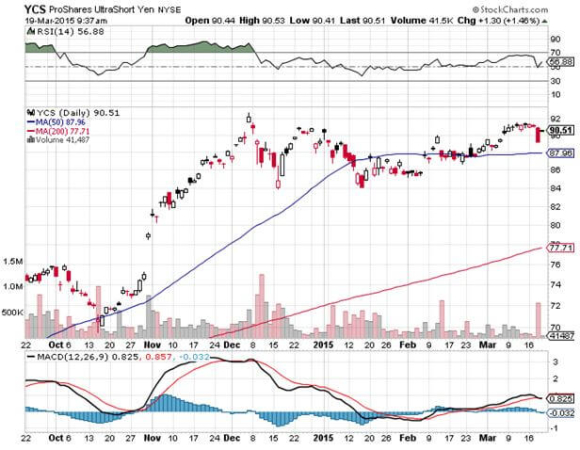While the Diary of a Mad Hedge Fund Trader focuses on investment over a one week to six-month time frame, Mad Day Trader, provided by Jim Parker, will exploit money-making opportunities over a brief ten minute to three day window. It is ideally suited for day traders, but can also be used by long-term investors to improve market timing for entry and exit points. Read more
While the Diary of a Mad Hedge Fund Trader focuses on investment over a one week to six-month time frame, Mad Day Trader, provided by Jim Parker, will exploit money-making opportunities over a brief ten minute to three day window. It is ideally suited for day traders, but can also be used by long-term investors to improve market timing for entry and exit points. Read more
While the Diary of a Mad Hedge Fund Trader focuses on investment over a one week to six-month time frame, Mad Day Trader, provided by Jim Parker, will exploit money-making opportunities over a brief ten minute to three day window. It is ideally suited for day traders, but can also be used by long-term investors to improve market timing for entry and exit points. Read more
As a potentially profitable opportunity presents itself, John will send you an alert with specific trade information as to what should be bought, when to buy it, and at what price. Read more
While the Diary of a Mad Hedge Fund Trader focuses on investment over a one week to six-month time frame, Mad Day Trader, provided by Jim Parker, will exploit money-making opportunities over a brief ten minute to three day window. It is ideally suited for day traders, but can also be used by long-term investors to improve market timing for entry and exit points. Read more
Global Market Comments
March 20, 2015
Fiat Lux
SPECIAL JAPAN ISSUE
Featured Trade:
(FRIDAY, MAY 15 SAN FRANCISCO STRATEGY LUNCHEON)
(THE BULL CASE FOR JAPANESE STOCKS),
(DXJ), (SNE), (CAJ),
(IT?S ALL OVER FOR THE JAPANESE YEN),
(FXY), (YCS)
WisdomTree Japan Hedged Equity ETF (DXJ)
Sony Corporation (SNE)
Canon Inc. (CAJ)
CurrencyShares Japanese Yen ETF (FXY)
ProShares UltraShort Yen (YCS)
If you live long enough, you see everything.
After a 25-year hiatus, here I am finally back making money in the Japanese stock market once again.
Any sentient being couldn?t help but notice the specular results the Japanese stock market has produced so far in 2015.
The Nikkei Average is up a robust 11.7%, while the Wisdom Tree Japan Hedged Equity Fund (DXJ), which eliminates all of the underlying yen currency risk, has tacked on an impressive 13.2%. This compares to a US Dow average return for the same period of essentially zero.
So, is it too late to get in? Are we joining the tag ends of a party that is winding down? Or is the bull market just getting started?
To answer that question, you have to go to a 30 year chart for the Nikkei average which chronicles all of the violence, heartbreak and drama of the great Japanese stock market crash, and the budding recovery that has since ensued.
The bulls see a crucial triple bottom at ?7,500 that has spread out over ten years, from 2003 to 2013. The initial resistance for the bull market was at ?18,000. That level was decisively broken last week.
And as any long in the tooth technical analyst will tell you, the longer the base building, the longer the recovery.
It is no accident that this sea changing technical action is happening now. Last year rumors abounded that the Japanese government would mandate higher equity weighting by Japanese pension fund managers.
That is exactly what happened at the end of February. The government required pension fund managers to increase equity weightings from 8% to 25%, at the expense of their Japanese government bond holdings. I guess the 0.33% yield on the ten-year wasn?t exactly tickling their fancy.
To meet the new guidelines, managers have to buy $120 billion worth of stocks over the next two years.
That is a lot of stock.
Japanese pension fund managers are the world?s most conservative. Since they can no longer buy all the domestic bonds they want, they are investing in stocks that are essentially bond equivalents.
These include relatively high dividend yielding domestic defensive sectors, like pharmaceuticals, railroads, services, chemicals and foods. With the program only just starting, the Nikkei will be underpinned by local Japanese institutional buying, possibly for years. That eliminates your downside.
Enter the foreign investor. Gaijin mutual fund and hedge fund managers alike were net sellers of Japanese stock for all of 2014. They turned to net buyers only three weeks ago.
Guess what kind of stocks foreigners like to buy? The same kind they buy at home: technology stocks. Take a look at the charts below for Sony (SNE) and Canon (CAJ) and the breakouts there exactly match up with the timeline I described above.
Sony, in particular deserves special mention. Sony was the Apple of Japan during the 1980?s, and should have been the Apple of today. But the company lost its way after 1990, when the founder, my friend Akio Morita, passed away.
Succeeding management was dull, sluggish, and unimaginative. The world quit buying its top of the line stereo systems. As a result, its market capitalization plunged from $150 billion to only $10 billion.
The final indignity came when North Korean hackers almost wiped out the company last year when it released The Interview, a spoof on dictator Kim Jong-un.
These days, Sony is leading the resurgence of the Japanese stock market. Management modernized and westernized. It launched a range of new high tech products. It is selling at a dirt cheap 12X multiple. I also think it is safe to say that their hacking defenses are now state of the art.
It doesn?t hurt that when foreign investors think of buying Japan, picking up Sony is the first thing that comes to mind.
So the technicals and the supply/demand picture lines up, how about the fundamentals?
Go into Japan now, and you are betting that Prime Minister Shinzo Abe (I knew his dad), will succeed in his ?three arrows? plan for economic and financial reform. Insiders believe he can pull this off.
The December election gave him a continued mandate from the Japanese people. The Bank of Japan is also in his corner, implementing a monetary policy that is so aggressive that it was once thought unimaginable. Doubling the money supply in two years?
This is why the Japanese yen will continue to depreciate, which is also highly reflationary for the economy, and is the subject of my Trade Alert below to sell yen.
If all of this lines up, then the next target for the Nikkei is for it to add another ?10,000, up nearly 50% from here. Beyond that, the Japanese stock average is likely to take a run at its old 1989 high of ?39,000.
I remember the day it hit that level all too well.
The rock group Chicago was leading the charts with Look Away. The office at Morgan Stanley was packed with women wearing these big shoulder pads that made them look like football players. Huge sunglasses, neon colors and big hair were everywhere.
Like I said, if you live long enough, you see everything, even another Japanese bull market.
The only reservation I have about doing this trade right now is that the Japanese fiscal year ends on March 31. As we all know, book closings can generate some pretty weird gyrations in the market place as both companies and government window dress in the extreme.
However, once we are in the new fiscal year, I expect the yen to resume its downtrend, and the Nikkei its uptrend.
I think that the action in the foreign currency markets is about to shift from the Euro, which is now oversold in the extreme, to the Japanese yen, which has recently been sleepy.
?Oh, how I despise the yen, let me count the ways.?
I?m sure Shakespeare would have come up with a line of iambic pentameter similar to this if he were a foreign exchange trader. I firmly believe that a short position in the yen should be at the core of any hedged portfolio for the next decade.
To remind you why you hate the currency of the land of the rising sun, I?ll refresh your memory with this short list:
1) With the world?s structurally weakest major economy, Japan is certain to be the last country to raise interest rates. Interest rate differentials between countries are the single greatest driver of foreign exchange rates. That means the yen is taking the downtown express.
2) This is inciting big hedge funds to borrow yen and sell it to finance longs in every other corner of the financial markets. So ?RISK ON? means more yen selling, a lot.
3) Japan has the world?s worst demographic outlook that assures its problems will only get worse. They?re just not making enough Japanese any more. Countries that are not minting new consumers in large numbers tend to have poor economies and weak currencies.
4) The sovereign debt crisis in Europe is prompting investors to scan the horizon for the next troubled country. With gross debt well over a nosebleed 260% of GDP, or 130% when you net out inter agency crossholdings, Japan is at the top of the list.
5) The Japanese ten-year bond market, with a yield of only 0.33%, is a disaster waiting to happen. It makes US Treasury bonds look generous by comparison at 1.93%. No yield support here whatsoever.
6) You have two willing co-conspirators in this trade, the Ministry of Finance and the Bank of Japan, who will move Mount Fuji if they must to get the yen down and bail out the country?s beleaguered exporters and revive the economy.
When the big turn inevitably comes, we?re going to ?125, then ?130, then ?150. That works out to a price of $150 for the (YCS), which last traded at $90.50. But it might take a few years to get there.
If you think this is extreme, let me remind you that when I first went to Japan in the early seventies, the yen was trading at ?305, and had just been revalued from the Peace Treaty Dodge line rate of ?360.
To me the ?120.78 I see on my screen today is unbelievably expensive.
 It?s All Over for the Yen
It?s All Over for the Yen
As a potentially profitable opportunity presents itself, John will send you an alert with specific trade information as to what should be bought, when to buy it, and at what price. This is your chance to ?look over? John Thomas? shoulder as he gives you unparalleled insight on major world financial trends BEFORE they happen. Read more
Legal Disclaimer
There is a very high degree of risk involved in trading. Past results are not indicative of future returns. MadHedgeFundTrader.com and all individuals affiliated with this site assume no responsibilities for your trading and investment results. The indicators, strategies, columns, articles and all other features are for educational purposes only and should not be construed as investment advice. Information for futures trading observations are obtained from sources believed to be reliable, but we do not warrant its completeness or accuracy, or warrant any results from the use of the information. Your use of the trading observations is entirely at your own risk and it is your sole responsibility to evaluate the accuracy, completeness and usefulness of the information. You must assess the risk of any trade with your broker and make your own independent decisions regarding any securities mentioned herein. Affiliates of MadHedgeFundTrader.com may have a position or effect transactions in the securities described herein (or options thereon) and/or otherwise employ trading strategies that may be consistent or inconsistent with the provided strategies.


